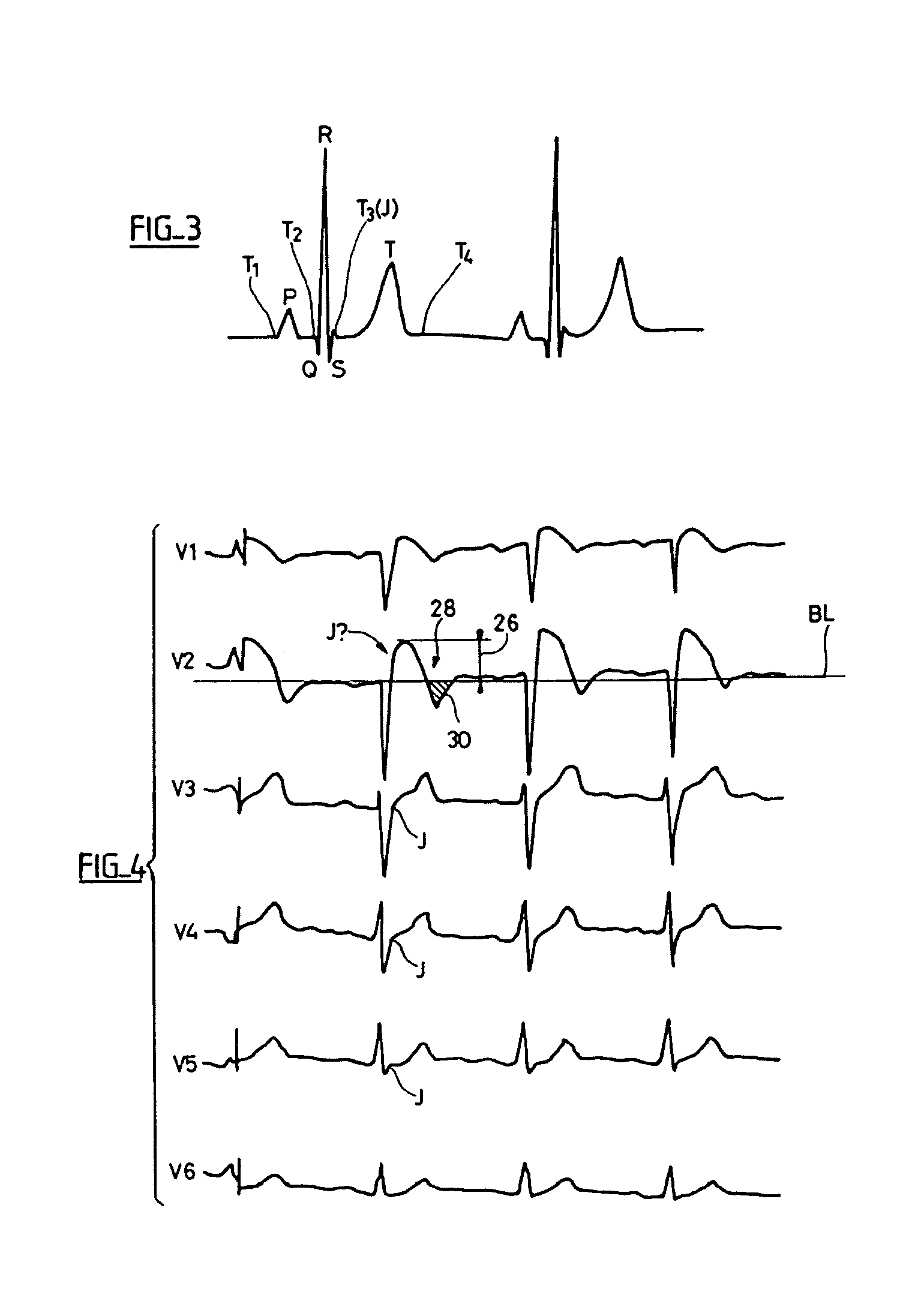Electrocardiologic device for the assisted diagnosis of brugada syndrome or early repolarization syndrome
a technology of a heart rhythm disorder and an electrocardiologic device, which is applied in the field of electrocardiology to achieve the effect of reducing bias and high sensitivity
- Summary
- Abstract
- Description
- Claims
- Application Information
AI Technical Summary
Benefits of technology
Problems solved by technology
Method used
Image
Examples
Embodiment Construction
[0054]One will now describe an example embodiment of the device according to the present invention.
[0055]FIG. 1 schematically shows a situation wherein the invention is implemented by collecting an ECG signal by means of external surface electrodes applied on the thorax 12 of a patient.
[0056]Generally speaking, the heart electrical activity manifests on the surface of a patient's body through ECG signals that are collected by electrodes 10 that are positioned in particular locations of the patient's skin. These locations are conventionally designated as RA, LA, LL, and V1 to V6. The ECG signals are collected between predefined pairs of electrodes, each of these pairs determining a different derivation. The complete analysis of the ECG involves a set of twelve derivations, so that the heart electrical activity can be assimilated to a twelve-dimension vector that is varying over time: the bipolar (I, II, III) and unipolar (aVF, aVR, aVL) derivations allow to represent the electrical a...
PUM
 Login to View More
Login to View More Abstract
Description
Claims
Application Information
 Login to View More
Login to View More - R&D
- Intellectual Property
- Life Sciences
- Materials
- Tech Scout
- Unparalleled Data Quality
- Higher Quality Content
- 60% Fewer Hallucinations
Browse by: Latest US Patents, China's latest patents, Technical Efficacy Thesaurus, Application Domain, Technology Topic, Popular Technical Reports.
© 2025 PatSnap. All rights reserved.Legal|Privacy policy|Modern Slavery Act Transparency Statement|Sitemap|About US| Contact US: help@patsnap.com



